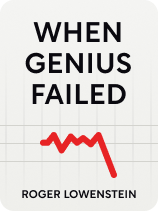

This article is an excerpt from the Shortform book guide to "When Genius Failed" by Roger Lowenstein. Shortform has the world's best summaries and analyses of books you should be reading.
Like this article? Sign up for a free trial here.
What is the Efficient Market Hypothesis? How did John Meriwether use this hypothesis to perfect computer trading?
The Efficient Market Hypothesis is a financial theory that states stock prices reflect all existing information. In the early 1980s, Meriwether used this theory to introduce computer-based mathematical modeling into trading.
Discover how the Efficient Market Hypothesis played into Meriwether’s strategy.
Pioneering the Arbitrage Group at Salomon Brothers
Before getting into what the Efficient Market Hypothesis is, we need background information to understand it better. By the early 1980s, writes When Genius Failed by Roger Lowenstein, Meriwether had assembled a team of academic quants—individuals from academia who could introduce intellectual rigor and computer-based mathematical modeling into trading, moving away from the instinct-driven approach. His team at Salomon Brothers built computer models that identified market inefficiencies. They could pinpoint instances where bond prices deviated from what they “should” be in a perfectly rational market. These discrepancies presented unprecedented opportunities to buy below market value or sell above market value.
| The Rise of Computers Meriwether’s work in the 1970s and 1980s coincided with an era of exponential growth in computer processing power. The principle behind this growth is known as Moore’s law, which states that the speed and capabilities of computer chips double every two years due to chipmakers’ increasing ability to fit more transistors on semiconductor chips. Since its promulgation in 1965, Moore’s law has largely held true. Meriwether’s team successfully rode the computer processing wave as they were getting the Arbitrage Group at Salomon Brothers off the ground, with computing power increasing a trillion-fold from 1956 to 2015. It wasn’t just the finance industry that computing power was revolutionizing. One study of labor and residential data from 1970 to 2000 shows a significant shift in the skills required for new jobs across all industries after 1980—with this shift beginning at the same time that the personal computer became ubiquitous. Computer-related jobs became the most in-demand, and computer-related industries saw the fastest labor growth. By 2000, all the fastest-growing jobs were related to computers. |
The Efficient Market Hypothesis
Lowenstein notes that the intellectual foundation of this computational strategy was the Efficient Market Hypothesis (EMH), which posited that prices of stocks and bonds in the market were always rational. This implied that securities were always correctly priced, and the market would quickly correct any mispriced assets. The belief was that irrationality couldn’t persist—but that temporary irrationality in pricing could be lucrative for the traders who knew how to spot it.
The group consistently delivered impressive results. However, in 1991, the tide turned for Meriwether. A scandal involving a trader in his group rocked Salomon Brothers, ultimately forcing him out of the firm. While evidence of personal wrongdoing on his part was thin, his departure marked the end of an era at Salomon Brothers.
(Shortform note: Although Lowenstein writes that there was little evidence of Meriwether’s personal culpability, reporting at the time painted a more nuanced picture of his role in this scandal. The New York Times reported that Meriwether was aware of a scheme within the company to manipulate the US Treasury bond market in violation of the rules governing the auction process. The article suggested that Meriwether’s knowledge of this scheme did implicate him in the wrongdoing. This raised questions about his level of responsibility and the potential complicity of top executives within the company, which was a significant factor in the scandal’s notoriety and the subsequent investigations by regulatory authorities.)
| The Limitations of EMH The limitations of EMH became apparent during the 2008 financial crisis. As Lowenstein writes, EMH posits that financial markets are efficient, with prices instantly reflecting all available information, making it impossible for investors to consistently outperform the market. However, the 2008 crisis was precipitated by the proliferation of risky practices such as subprime mortgage lending and the creation of complex derivatives. These practices were based on assumptions that didn’t adequately account for market risks. Even though information about these practices was widely available, markets failed to efficiently respond. For instance, the housing bubble continued to inflate despite mounting evidence of its instability. Moreover, the credit rating agencies assigned top ratings to financial instruments that were inherently risky, thereby misleading investors. EMH would suggest that such practices should be instantly reflected in asset prices, but they weren’t. |

———End of Preview———
Like what you just read? Read the rest of the world's best book summary and analysis of Roger Lowenstein's "When Genius Failed" at Shortform.
Here's what you'll find in our full When Genius Failed summary:
- The 1998 collapse of Long-Term Capital Management (LTCM)
- The history of LTCM, how it operated, and how it achieved success
- Insights to the LTCM story in light of subsequent events






